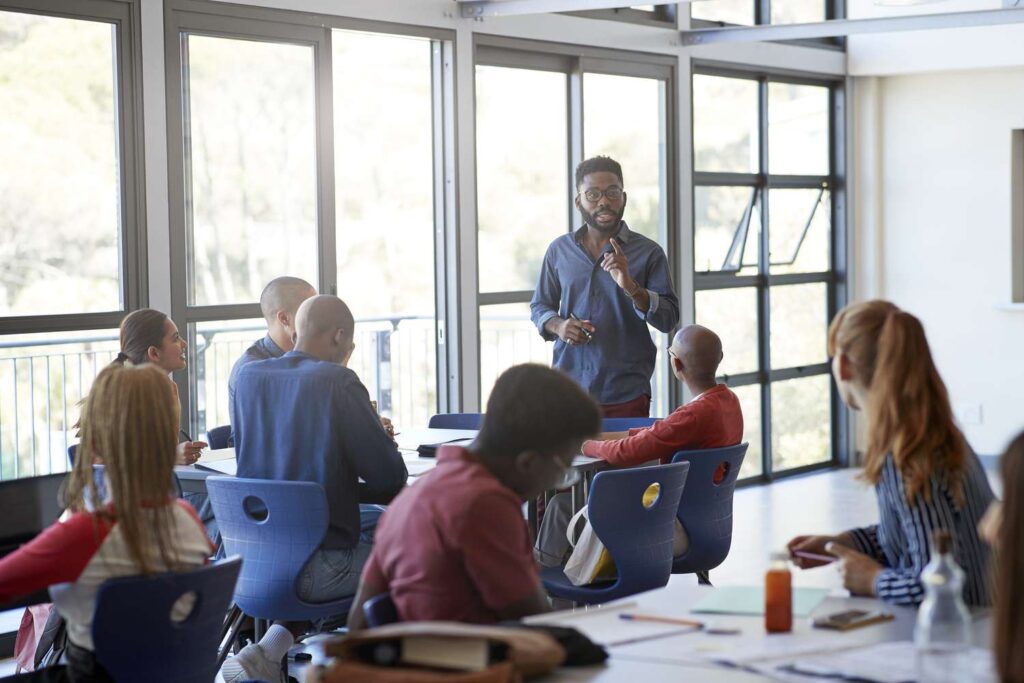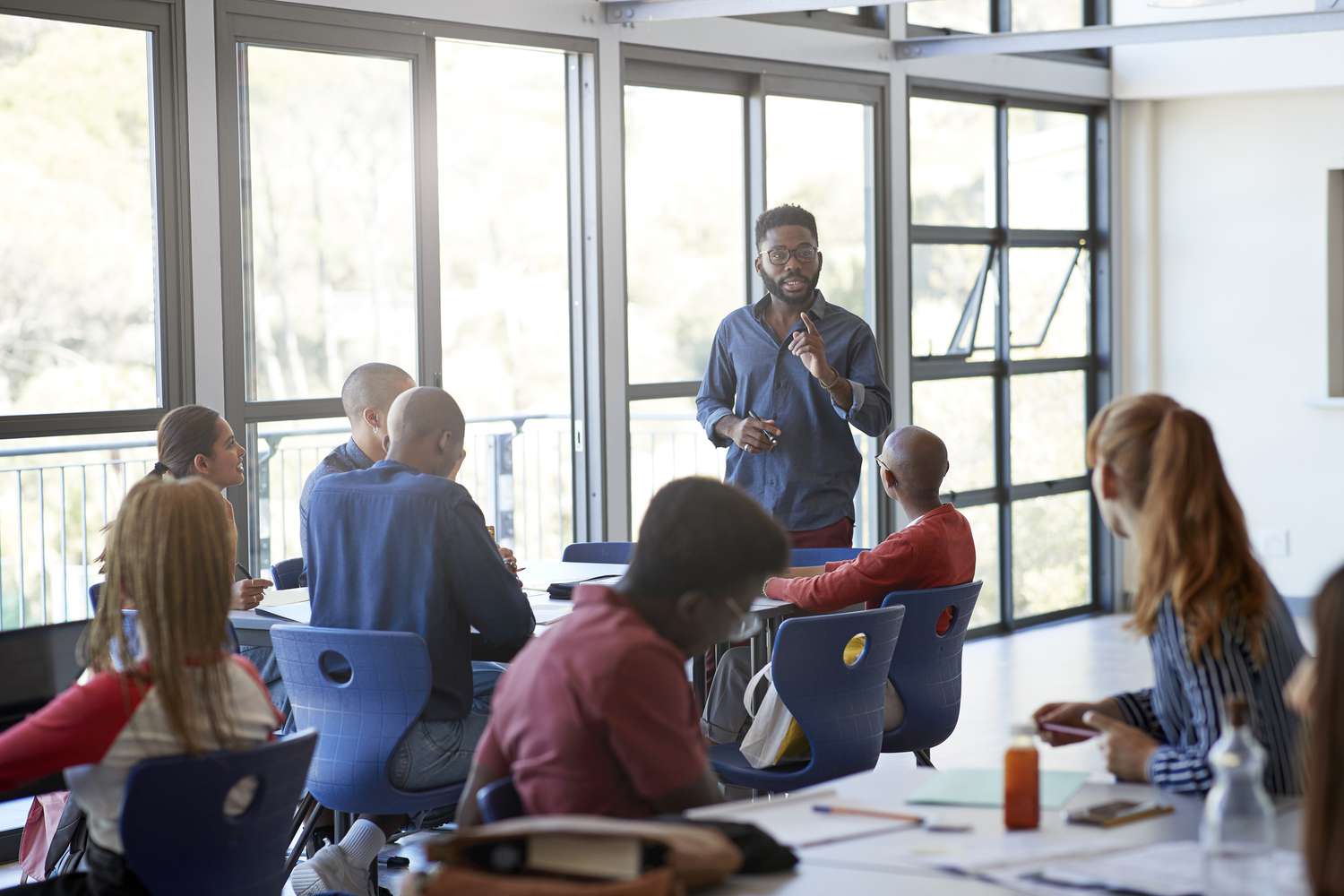In the realm of further education, the synergy between students and teachers plays a pivotal role in shaping a dynamic learning environment. This blog post delves into the positive aspects of student-teacher collaboration, unraveling the transformative benefits and strategies that contribute to a successful and enriching educational experience. From fostering engagement to promoting effective teaching methods, let’s explore the key elements that make collaborative learning in further education truly impactful.

1. Defining Student-Teacher Collaboration in Further Education
a. Collaborative Learning in Higher Education
- Definition: Student-teacher collaboration refers to the interactive and mutually beneficial relationship between educators and learners in further education settings.
- Beyond the Classroom: Collaboration extends beyond traditional lectures, encompassing discussions, projects, and shared decision-making in the educational journey.
b. The Evolving Role of Educators
- Facilitators of Learning: Educators transition from knowledge providers to facilitators of learning, guiding students to explore and construct knowledge actively.
- Mentorship and Guidance: Teachers serve as mentors, providing guidance, support, and real-world insights to help students navigate the complexities of higher education.
c. Active Student Participation
- Engagement: Collaboration encourages active student participation, creating an environment where learners are more engaged, curious, and motivated.
- Ownership of Learning: Students take ownership of their learning experiences, contributing to a sense of empowerment and responsibility.
2. The Positive Aspects of Student-Teacher Collaboration
a. Enhanced Learning Outcomes
- Critical Thinking: Collaborative learning cultivates critical thinking skills as students engage in discussions, analyze information, and solve problems collectively.
- Deeper Understanding: Interactive discussions and collaborative projects deepen students’ understanding of complex concepts.
b. Improved Communication Skills
- Verbal Communication: Students develop effective verbal communication skills through active participation in discussions and presentations.
- Written Communication: Collaborative projects often involve written communication, honing students’ ability to articulate ideas clearly and concisely.
c. Building a Supportive Learning Community
- Peer Support: Student-teacher collaboration fosters peer support, creating a network where learners help each other succeed academically.
- Sense of Belonging: A collaborative learning community contributes to a sense of belonging, reducing feelings of isolation often associated with higher education.
d. Preparation for Professional Environments
- Teamwork Skills: Collaborative learning prepares students for professional environments where teamwork is essential for success.
- Leadership Opportunities: Students may assume leadership roles within collaborative projects, honing leadership skills crucial for future careers.
3. Strategies for Effective Student-Teacher Collaboration
a. Interactive Classroom Activities
- Discussion Forums: Create online or in-person discussion forums where students can engage in meaningful conversations about course topics.
- Group Activities: Incorporate group activities, case studies, and problem-solving exercises that require collaborative efforts.
b. Project-Based Learning
- Real-World Applications: Design projects that have real-world applications, encouraging students to work together to address authentic challenges.
- Interdisciplinary Projects: Foster collaboration across disciplines by designing projects that integrate knowledge from various subjects.
c. Technology Integration
- Online Collaboration Tools: Utilize online collaboration tools that facilitate communication, file sharing, and project management among students and teachers.
- Virtual Meetings: Conduct virtual meetings for discussions, consultations, and collaborative planning, accommodating diverse schedules.
d. Peer-to-Peer Mentoring Programs
- Structured Mentorship: Implement structured mentoring programs where more experienced students mentor their peers, creating a supportive learning environment.
- Learning Communities: Establish learning communities or study groups where students can collaborate on coursework and share insights.
4. Overcoming Challenges in Student-Teacher Collaboration
a. Diverse Learning Styles and Preferences
- Challenge: Students may have different learning styles and preferences, making it challenging to find collaborative approaches that suit everyone.
- Solution: Provide a variety of collaborative activities, allowing students to choose those that align with their learning preferences. Encourage flexibility and adaptability in group work.
b. Unequal Participation
- Challenge: Some students may contribute more actively than others in collaborative settings.
- Solution: Implement assessment strategies that consider individual contributions within group projects. Provide guidelines for equal participation and encourage open communication.
c. Effective Communication
- Challenge: Miscommunication or lack of communication can impede the success of collaborative projects.
- Solution: Emphasize the importance of clear and respectful communication. Provide guidelines for effective online and offline communication within the collaborative learning environment.
5. Measuring the Impact of Student-Teacher Collaboration
a. Quantitative Metrics
- Assessment Results: Analyze assessment results to identify correlations between student-teacher collaboration and academic success.
- Retention Rates: Examine retention rates to gauge the impact of collaborative learning on students’ commitment to their academic journey.
b. Qualitative Feedback
- Student Reflections: Collect reflections from students on their experiences with collaborative learning, focusing on the perceived benefits and challenges.
- Teacher Observations: Gather feedback from educators through observations, interviews, and discussions to assess the impact on the learning environment and individual student growth.
c. Long-Term Outcomes
- Post-Education Surveys: Conduct surveys with alumni to explore the long-term impact of student-teacher collaboration on their professional success and ongoing learning.
- Alumni Success Stories: Share success stories of alumni who attribute their achievements to the collaborative learning experiences they had during further education.
6. Success Stories and Testimonials
a. Individual Student Journeys
- Success: Share stories of individual students who thrived academically and personally due to positive student-teacher collaboration experiences.
- Testimonials: Feature testimonials from students expressing gratitude for the transformative impact of collaborative learning on their educational journey.
b. Educator Perspectives on Collaborative Teaching
- Success: Highlight the perspectives of educators who have witnessed positive transformations in their students through the incorporation of collaborative teaching strategies.
- Best Practices: Share best practices and innovative teaching methods that educators have employed to foster successful student-teacher collaboration.
Conclusion
In conclusion, student-teacher collaboration in further education stands as a cornerstone for fostering a vibrant and effective learning environment. By embracing the positive aspects of collaboration, implementing effective strategies, and overcoming challenges, educators and students can collectively contribute to an educational experience that not only prepares individuals for success in higher education but also equips them with the skills and mindset for lifelong learning and professional achievement.
